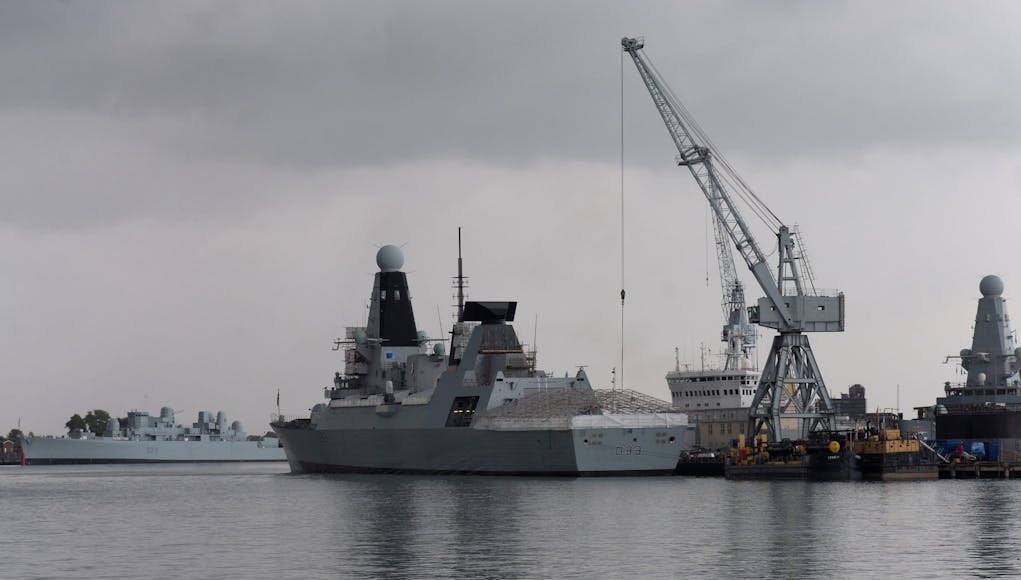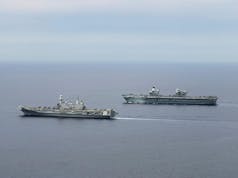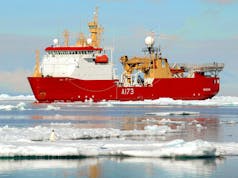A response to a Freedom of Information revealed the costs associated with HMS Dauntless while the vessel is tied up alongside in Portsmouth.
It’s no secret that HMS Dauntless had endured the most issues relating to the widely reported propulsion issues currently found in the Type 45 Destroyers.
HMS Dauntless is the second ship of the Type 45 or Daring-class air-defence destroyers built for the Royal Navy. The Type 45 destroyers are primarily designed for anti-air warfare with the capability to defend against sophisticated targets such as fighter aircraft, drones as well as highly maneuverable sea skimming anti-ship missiles travelling at supersonic speeds. The Royal Navy describes the destroyers’ mission as being “to shield the Fleet from air attack”.
The FoI response can be found here.

While a remedy is being worked on and the vessel will eventually return to operations, this will not be for a few years yet.
A contract to fully rectify issues within the Type 45 Destroyer fleet will be awarded in 2018 it has been confirmed. A staggered refit was also announced, which will involve cutting into the ships’ hulls and fitting additional diesel generation capacity, this has become known as Project Napier.
 It’s no secret that HMS Dauntless had endured the most issues relating to the widely reported propulsion issues currently found in the Type 45 Destroyers.
It’s no secret that HMS Dauntless had endured the most issues relating to the widely reported propulsion issues currently found in the Type 45 Destroyers.
A parliamentary written question had confirmed what many feared, that the vessel would not be leaving Portsmouth for some time. Answered by Philip Dunne, then Minister of State for Defence Procurement:
“The introduction of Engineering Training Ships is an important component of the Royal Navy’s comprehensive programme to improve training and career development opportunities by increasing training capacity.
Ships in the operating cycle immediately ahead of refit will be used to deliver training alongside home Bases and Ports. HMS DAUNTLESS entered this profile in February this year.
A reduced Ship’s Company reside on board as normal, augmented by trainees who use the opportunity to gain experience through development activities in a realistic environment.”
According to the Royal Institute of Naval Architects:
“Project Napier was established in 2014 with two core work strands. The first of these, known as the Equipment Improvement Plan (EIP), is continuing efforts to enhance system reliability and to meet the original design intent in the near term.
The second component of Project Napier is a longer term Power Improvement Plan (PIP), intended to improve overall system resilience by adding upgraded diesel generators to provide the electrical generation capacity required to meet the overwhelming majority of propulsion and ship power requirements without reliance on WR-21.”
Project Napier will cost £280 million.
The reliability issues with the intercooler lead to occasional near-complete power generation failures, temporarily disabling not only propulsion, but power generation for weapons, navigational systems, and other purposes, leaving the ships vulnerable to “total electric failure”.
In June last year, Ministry of Defence officials admitted that the ships were breaking down because the intercooler could not cope with the warm waters of the Gulf.
Manufacturers Rolls-Royce of the fully functioning, non-problematic turbines said that the intercoolers for the WR-21 had been built as specified, but that conditions in the Middle East were not “in line with these specs”.
Current First Sea Lord Admiral Philip Jones clarified:
“WR-21 gas turbines were designed in extreme hot weather conditions to what we call “gracefully degrade” in their performance, until you get to the point where it goes beyond the temperature at which they would operate… we found that the resilience of the diesel generators and the WR-21 in the ship at the moment was not degrading gracefully; it was degrading catastrophically, so that is what we have had to address.”
It should be noticed that despite the problems, the Royal Navy has been able to deploy Type 45 destroyers in nine-month cycles to the Gulf region where temperatures are high with little fault.














Not excusing the waste generated by Government departments who don’t have to face the consequences as do people in the Private sector, but in reality it doesn’t matter as the wages would have to be paid anyway.
Uk Goverment should have gone with General Electric Company Engines LM2500
Which is what Bae recommended but was overruled by the MoD.
To be read along with your anti-Bae rant below.
The saga of the type45 project brings me to tears. I would like to think it was an isolated event, but it’s not a long list of similar project have followed the same dismal path.
The UK MOD and BAE systems seem incapable of delivering working weapon systems despite billions and billions being spent.
I would like to see genuine reform of our defence procurement, but this seems a distant dream.
The only viable way ahead is for the UK armed forces to be equipped with foreign designed and made equipment to ensure they have the right tools to the job asked of them
Well Said Mike Saul have said all along we need to get rid of BAE Systems
Incidentally, the Royal Navy’s missile submarines were built by Vickers Shipbuilding and Engineering, now BAE, and are due to be replaced by a new class of subs, also to be built by BaE. The subs, one of which is on patrol at any given moment, were designed to carry 16 Trident inter-continental ballistic missiles (ICBMs). However, presumably to save money, each now puts to sea carrying a half load of 8 missiles.
It seems that almost any contract BAE is entrusted with is likely to encounter problems.
The Type-45 guided missile destroyer, currently the backbone of the Royal Navy’s surface fleet is built by BAE. In 2006 it was revealed that the ships had problems with their propulsion systems. First Sea Lord Admiral Philip Jones explained that “WR-21 gas turbines were designed in extreme hot weather conditions to what we call “gracefully degrade” in their performance, until you get to the point where it goes beyond the temperature at which they would operate… we found that the resilience of the diesel generators and the WR-21 in the ship at the moment was not degrading gracefully; it was degrading catastrophically…”
The Type-45 destroyer is unable to operate effectively in warm waters. 4 of the 6 Type-45s have experienced total engine failure.
The prime purpose of the Type-45 is to defend the fleet from air attack. On the first deployment of the class to the Falkland Islands, where air attack from Argentina remains a concern, the Aster 15 & 30 missile system was not working.
The standard issue British army rifle, manufactured by BAE, the SA 80 (so-called as it was due to enter service in 1980) entered service 5 years late. Numerous defects in the weapon led to many modifications, and for the initial 5 years of issue, the British armed forces found themselves with a seriously sub-standard weapon.
BAE has also produced protective ‘body armour’ for the British military. Supply issues of protective clothing were blamed for the deaths of a number of British troops in Afghanistan, although this may owe more to the procurement policies of the Ministry of Defence.
BAE Systems has been under investigation by the UK Serious Fraud Office, into the use of political corruption to help sell arms to Chile, Czech Republic, Romania, South Africa, Tanzania and Qatar, and has been the subject of allegations of bribery in relation to its business in Saudi Arabia.
And so, as Trump appears to be targetting the US defence industry, which has marinated in taxpayer’s largesse for so long, possibly questions may be asked about why, given its lamentable record, BAE continues to dominate the UK defence industry at such a huge cost to the taxpayer in financial terms, and to the country’s ability to actually defend its interests due to cost over-runs, missed deadlines, and defective equipment.
BAE is a privately owned company, but one which appears to have the clout, and the contacts, to hoover up highly lucrative contracts despite a less than impressive track record. Perhaps Donald Trump’s warning to the US defence industry will be echoed from Whitehall: Britain’s soldiers, sailors, and airmen deserve better than this.
What’s with this ridiculous anti-Bae rubbish. I assume you must be one of Putin’s robots because your post is just packed full of lies. SA80 & body armour from Bae?? give me a break.
There is no threat from Argentina – they don’t have an air force! I gave up reading your post as it sounds like a children’s fantasy comic.
Regards SA80, i knew someone who worked at the RSAF at Enfield when the rifle was being produced. He told me that there were numerous design and build problems which meant that almost every weapon was hand built and bespoke, parts working in one rifle if transferred to another would not work. The result was that the A1 version was not a viable weapon in a battlefield environment.
The good news is that the A2 version is such a weapon. I only hope when SA80 comes up for replacement in the mid 2020s we will have learnt the lessons of the past.
No doubt that replacement will be a foreign design and build.
And where did he work again? Not Bae was it??????
Read this Ron 5 :
The SA80 family was designed and produced (until 1988) by the Royal Small Arms Factory at Enfield Lock. In 1988, production of the rifle was transferred to the Royal Ordnance’s Nottingham Small Arms Facility (later British Aerospace, Royal Ordnance; now BAE Systems Land & Armaments).As a result, a more extensive modification programme was executed. In 2000, Heckler & Koch, at that time owned by the British defence conglomerate BAE Systems, was contracted to upgrade the SA80 family of weapons
Irrelevant of who is to blame – the key point of having ships laid up for training purposes is crazy.
These are massively expensive pieces of kit and whilst I understand the need to train people I just don’t think it is appropriate or the best use of resources to do this on a £1bn piece of kit that should be out there doing its job.
That’s what’s really wrong with all of this – there is a problem that has a solution and it just needs to be fixed fast, the asset is not getting any younger and in the navy that is important as the main problem with ships is that they are degrading from the moment they hit saltwater.
All round prime example of what is going wrong with the MOD
We keep making the same mistakes over and over again. Nimrod mra4, chinook, type 45, fres uv, watchkeeper and so on.
No single party carries sole responsibility, but the politicans, MOD, senior military and BAE systems are main culprits yet each blame each other and so the problem is never solved.
Complete and fundamental reform of UK defence procurement is required as well as a transformation of the UK defence industry.
Well said Mike!